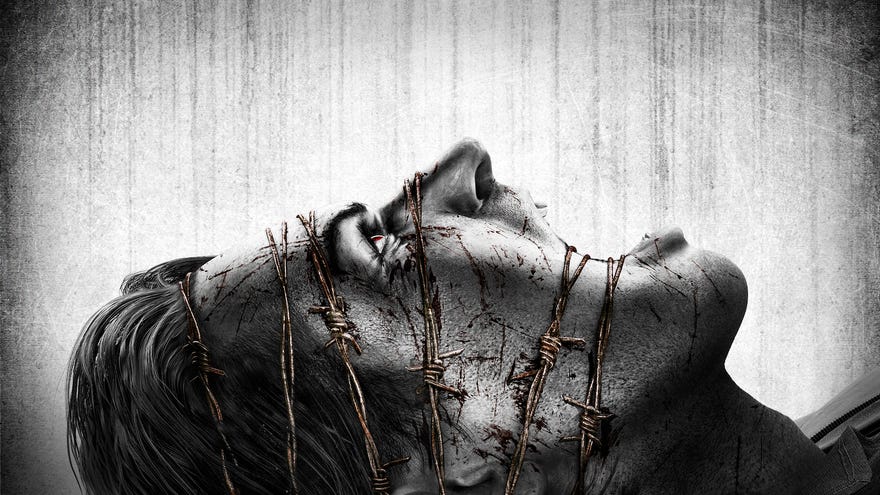The evil within and the evil without

Image credit: Microsoft
When I asked Tango Gameworks creative director John Johanas whom he’d give Hi-Fi Rush’s Best Audio trophy away to at this year’s GDC Awards, he said he’d split it between the game’s audio team and “the person who taught me everything I know” – Shinji Mikami, Tango’s founder and one of the erstwhile Capcom and Platinum big brains behind Resident Evil, Vanquish and much more besides. I confess, I found this response annoying – partly because I was hoping Johanas would bring up some obscure indie composer I could then namecheck at parties, and partly, because I have spent years waiting for Tango to escape Mikami’s shadow after essentially announcing themselves as a Mikami fan project back in 2010.
In recent years, it’s felt like they’ve been doing just that. The poppy, pulpy Hi-Fi Rush was a “dream” pitch from Johanas that stands among the best action games of this decade. Ghostwire: Tokyo isn’t quite as assured, but it’s an engrossing, enveloping marriage of first-person parkour, magical melee and Japanese folk horror. Where Tango’s The Evil Within games are Resident Evil remixes from the title on downwards, these latter projects stand on their own merits. They feel like Tango’s first proper steps beyond their founder’s formidable legacy. And now, Microsoft have shut Tango down.
I write this without wishing to diminish Mikami’s gifts or suggest that he has simply been a stifling influence. While his brand has dominated Tango’s reception, the idea has always been to use his name as a foundation for the work of younger souls. Nor is it entirely fair, I guess, to suggest that The Evil Within is simply Mikami fan service. Yes, the game borrows Resident Evil 4’s over-the-shoulder perspective and gunplay together with a lot of its structural and level design elements, but it also introduces a virtual reality gimmick that allows the developers to flesh out Resi’s architectural and geographical non sequiturs into a kind of schlocky concept album of sordid and historical or gleaming and futuristic locations. It’s a florid and inventive kind of trashy, with its monsters who have lockboxes for heads and its saveroom mirrors that broadcast Debussy.
Watch on YouTube
The sequel – directed by Johanas, with Mikami supervising – breaks the mold with open-worldy areas that are simultaneously its best and worst feature: they smooth out the original’s suffocating gauntlet-rush pacing while introducing a certain amount of secondary-mission cruft. The second game also chops and changes the original’s rather brutal, instakill bosses into something more befitting of a tactical shooter, without making them any the less spooky: I still think fondly of the witchy lady who sings to you through your controller speaker.
In hindsight, you can spy the seeds here of Ghostwire: Tokyo’s much grander urban sandbox of renegade phantoms. Ghostwire is no classic, but it has wonderful inspirations that might have really come alive in the sequel implied by the use of a subtitle. A combat system that transforms kuji-kiri gestures into an arsenal of gratifyingly muscular, short-range spells, in which curls of the wrist and finger yank the hearts out of yōkai. An open world that flexes around the contrast between a globalised modern metropolis and its ancient and local traditions. Ghostwire is to large extent the personal project of Ikumi Nakamura, who left the studio shortly after it was announced – there’s still a story to be told there, I reckon. But it remains a personal project without her, its locations and quests drawn from strolls the developers took around their own neighbourhood, asking what goblins might hide in any vaguely ominous shadow.
While many people reading this may mourn Tango chiefly for Hi-Fi Rush, their breakout critical hit, I will always think of Tango as a horror game developer. Writing this piece and revisiting The Evil Within, I’m struck by how the story’s frequent gear shifts capture a studio who are themselves navigating the tension between generations in game design.
In trying to build on and beyond their links to Mikami’s past games, Tango established themselves as developers who revisit forgotten roads and attempt to follow them back to the conventions of the present day. Where The Evil Within took aim at Resi 4, Ghostwire: Tokyo has a lot in common with older, emptier open-worlders that aren’t burdened with service-game progression elements. It makes me think of GTA 3, or even 1999’s Urban Chaos. This hybridising throwback approach isn’t necessarily appealing – Tango’s games can feel a little stuck in purgatory – but one great advantage of making games that feel out of time is that your games become timeless. And these are Tango’s works, not Mikami’s – they may be energised by his past projects, but they can no longer be reduced to that association. I’m desperately sad that the studio’s journey ends here.
>>> Read full article>>>
Copyright for syndicated content belongs to the linked Source : Rock Paper Shotgun – https://www.rockpapershotgun.com/tango-gameworks-deserves-to-be-remembered-for-more-than-shinji-mikami